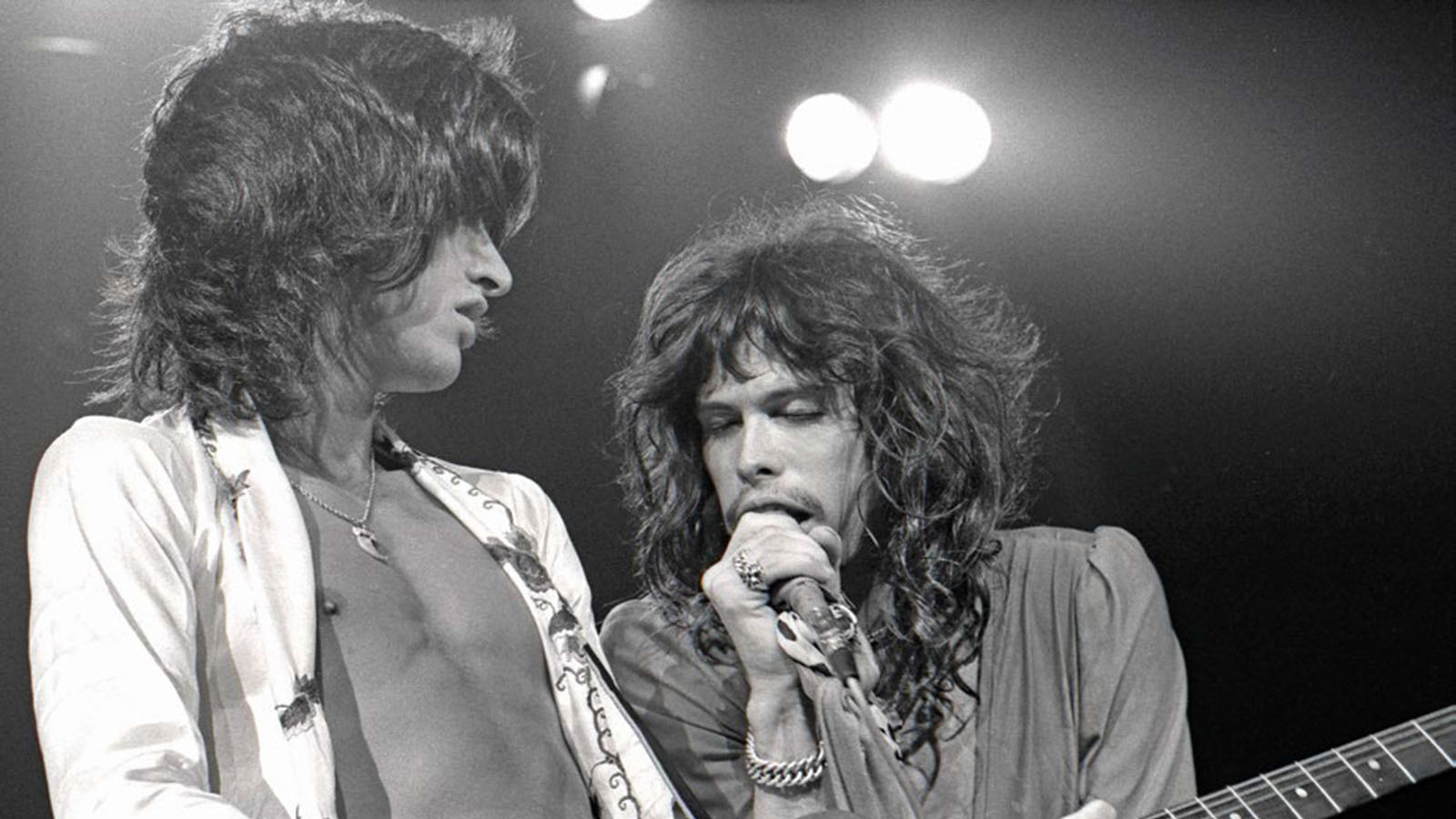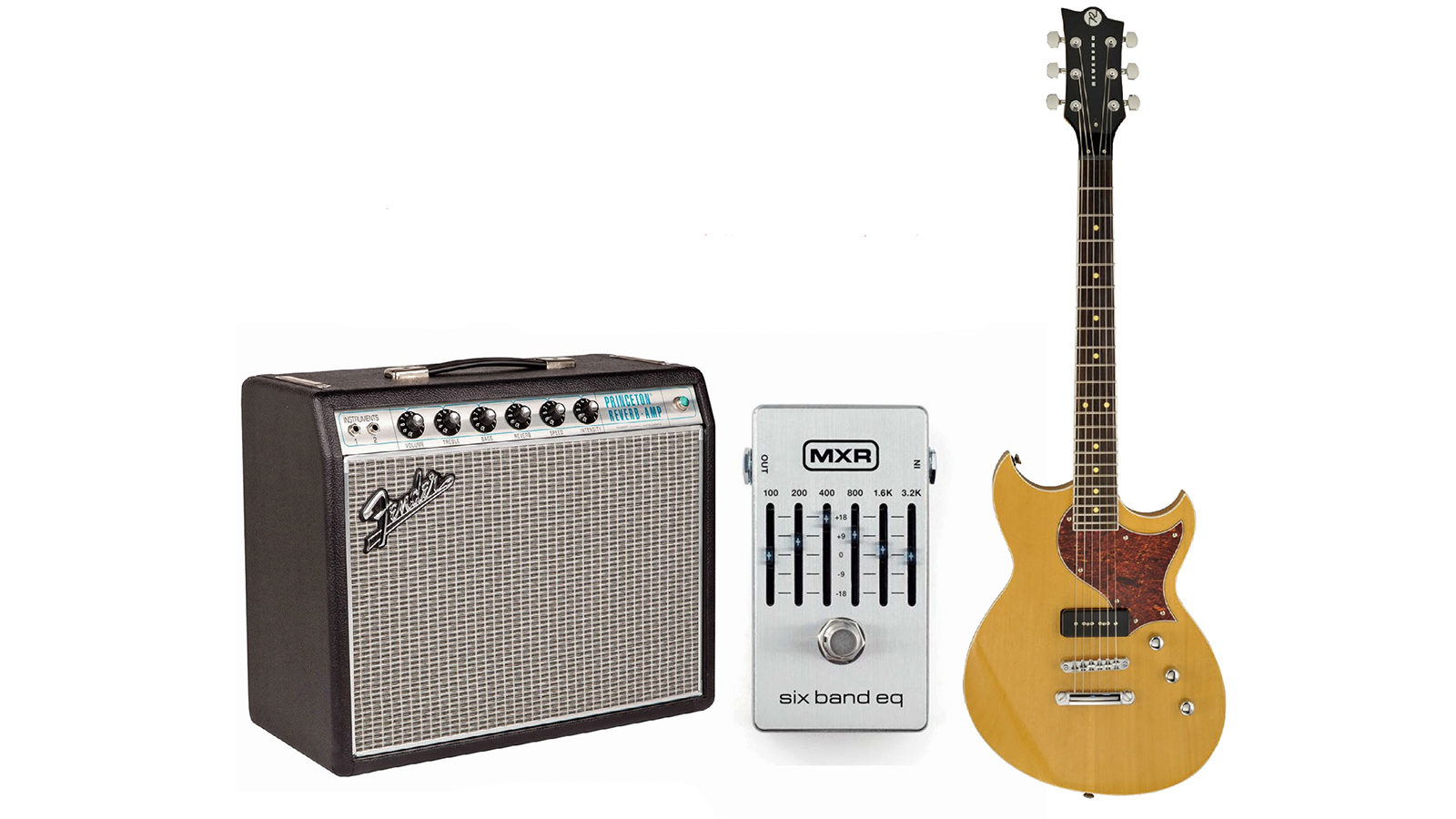The Secrets Behind Joe Perry's Guitar Tone on Aerosmith's Walk This Way
Aerosmith’s mid-Seventies albums are virtual encyclopedias of awesome hard rock guitar tones. Learn how Joe Perry got his on their iconic hit, "Walk This Way."

Aerosmith’s mid-Seventies albums Toys in the Attic and Rocks are virtual encyclopedias of awesome hard rock guitar tones. The rhythm guitar tracks have balls of steel and Joe Perry’s solos are as fat as a Cajun master chef with twice as much badass attitude. Awesome riffs abound on both albums, including the galloping pummel of “Back in the Saddle” and hypnotic swagger of “Sweet Emotion,” but the ne plus ultra riff of these efforts is undoubtedly the raunchy low-down funk of “Walk This Way.”
Joe Perry and Brad Whitford’s guitar tones on this song have bewildered guitarists for years. Many assumed that the guitarists used Sixties Marshalls or Fifties Fender tweed combos, but there’s a very distinctive midrange honk and percussive crunch prevalent on the guitar tracks that a Fender or Marshall can’t deliver on its own. Perry gave a hint about what he used in an interview with Steve Rosen in the March 1979 issue of Guitar Player, where he said, “When I’m at the Record Plant in New York City I use some Ampegs they have there — really hot Ampegs that sounds a lot like Fender Dual Showmans.”
For “Walk This Way,” Perry plugged into an Ampeg V-2, a 60-watt tube head with several unusual features, including a pair of 7027A power tubes and an EQ section featuring a Baxandall circuit for treble and bass along with an active midrange section with a selection of three different center frequencies: 300, 800 and 3000Hz. This was a house amp at the Record Plant that was used on numerous notable sessions.
For Perry’s main rhythm track (which can be heard by panning to the left; Brad Whitford’s parts are panned hard right), he used a double- cutaway Gibson Les Paul Junior (pictured below) with a single P-90 pickup and boosted the V-2’s midrange — set to 800Hz — to provide the proper grit, growl and howl. He also used the Les Paul Junior to overdub the first solo, but for the second solo and outro he switched to a late-Fifties Fender Stratocaster. He begins the second solo on the Strat’s bridge pickup, but starting at the outro’s fat, sustained note bends (around 2:45) he switches to the Strat’s neck pickup and engages a Seventies Maestro FZ-1S Fuzz-Tone (a.k.a. Super Fuzz) to further thicken the midrange and make the guitar “sound like an electric razor.”

GET THE SOUND, CHEAP!
• Reverend Sensei Jr.
• Fender 68 Custom Princeton Reverb
• MXR Six Band EQ
• TONE TIP: No other amp truly sounds like an Ampeg V-series head, but the MXR Six Band EQ can replicate some of the V-2’s distinctive midrange character by boosting the 800Hz slider about 10 to 12dB.
Get The Pick Newsletter
All the latest guitar news, interviews, lessons, reviews, deals and more, direct to your inbox!
ORIGINAL GEAR
GUITAR: 1960 Gibson Les Paul Junior, volume: 10, tone: 10; 1959 Fender Stratocaster with rosewood fretboard (bridge pickup for solo 2, volume: 10, bridge/middle pickup tone: 10; neck pickup for outro solo, volume: 10, neck tone: 9)
AMP: Ampeg V-2 head (Input 1, Volume 1: 6, Treble: 6, Midrange: 8, Bass: 3, Reverb: 0, Sensitivity 1 switch: 0dB, Ultra Hi switch: off, 1/2/3 switch: 2); Marshall 4x12 cabinet (speaker type unknown, probably Celestion G12M25)
EFFECTS: Maestro Fuzz Tone FZ-1S (Fuzz 1 setting, Volume: 10, Balance: 10, Sustain: 8; used for outro solo only)
STRINGS/TUNING: Ernie Ball Super Slinky (.009, .011, .016, .024, .032, .042), Standard
PICK: G\Fender Medium
Chris is the co-author of Eruption - Conversations with Eddie Van Halen. He is a 40-year music industry veteran who started at Boardwalk Entertainment (Joan Jett, Night Ranger) and Roland US before becoming a guitar journalist in 1991. He has interviewed more than 600 artists, written more than 1,400 product reviews and contributed to Jeff Beck’s Beck 01: Hot Rods and Rock & Roll and Eric Clapton’s Six String Stories.











